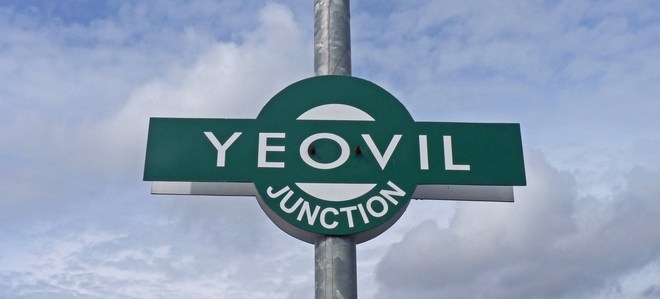
| My Photographs | Links Page |
|
|
YEOVIL RAILWAY CENTRE 2010 |
|
Yeovil Junction Station opened in 1860, on the newly constructed Salisbury to Exeter line, operated by the London & South Western Railway. It became a busy and important junction, particularly in respect of goods which were transferred between the LSWR and the Great Western at Yeovil. To further facilitate goods transfer at Yeovil Junction, the Clifton Maybank branch was constructed which directly linked the GWR's Weymouth line to the LWSR's Yeovil Junction station. By the early 1900s some 1,500 goods wagons were exchanged at Yeovil each month, as well as 260 tons of general goods which were moved between wagons in the transfer shed. However, with more goods being carried by road from the beginning of the 1930s, falling railway goods volumes resulted in the Clifton Maybank branch being closed down in 1937. Nevertheless, Yeovil Junction remained an important centre for steam locomotives on the Waterloo to Exeter line, and in 1947 a new 70 foot turntable was installed for turning the newly introduced Bullied Pacifics. However, the transfer shed went out of use in 1952, and became a store, then an engineering unit for private companies. The above-mentioned turntable became central to the formation of a railway centre at Yeovil. The turntable remained in place right through to the late 1980s, despite steam locos having been withdrawn from BR service 20 years earlier. To preserve the turntable and to provide facilities for main line steam specials, The South West Main Line Steam Company was formed in 1993. The organisation secured a 99-year lease on the turntable and the Clifton Maybank branch trackbed; the latter having been neglected since 1937. It is that company, with its charitable status, that runs the Yeovil Railway Centre. Part of the branch line now provides a short demonstration line, on which the public can take rides in an ex-GWR brake van, pulled by the resident steam saddle tank loco "Pectin". That transfer shed is now a public area, part museum, part cafeteria and part art gallery. The island platform at the centre also has the book and souvenir shop, as well as offices for the organisation. The photographs below were taken on Sunday 19th September 2010. |

Southern Railway-style station name on the platform at the centre.
The company logo incorporates the turntable that started the whole idea.
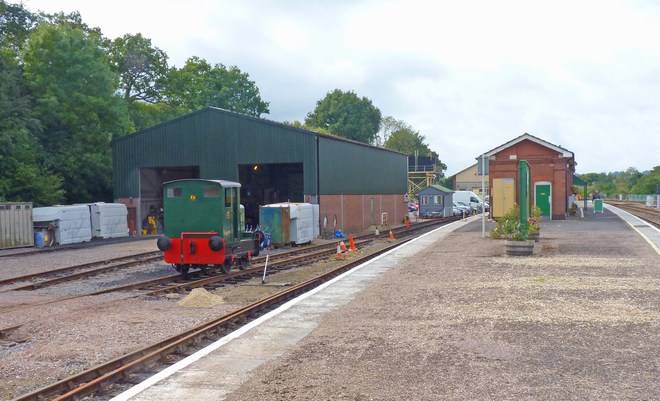
This view shows the engineering and loco shed on the left, and platform buildings that include the shop.
Passenger trips are provided on the short line in the GWR brake van, hauled by 0-4-0 saddle tank Pectin.
Pectin was built by Peckett & Sons of Bristol in 1921.
She was purchased in 1972 by the 6000 Locomotive Association who restored her.
Passengers gathered in the brake van, ready for their ride up the line and back.
Turntable demonstrations are given twice a day. The man in the hi-viz jacket is describing the working arrangements to the audience.
The train revolving on the turntable, which is operated by a vacuum pipe attached to the engine.
The centre also owns this Ruston diesel shunter, named Yeo.
This Class 50 diesel locomotive, named Fearless, is based at
the centre whilst being restored by the private owner.
Fifty of these locos were built by English Electric in 1967-68 for the west coast main line.
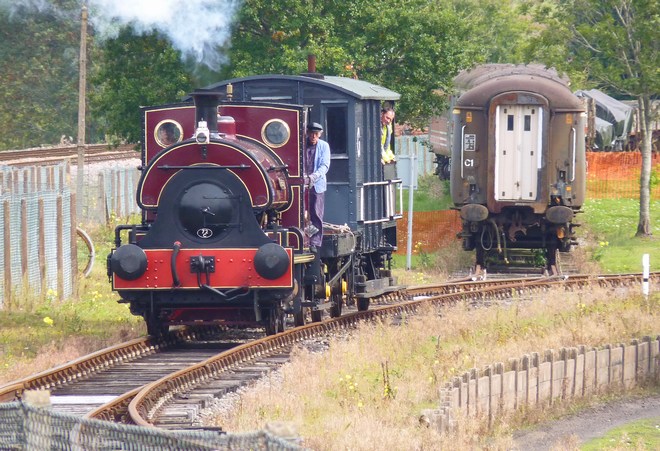
Pectin and brake van on a return trip to the station.
Part of the interior of the engine shed/engineering work shop.
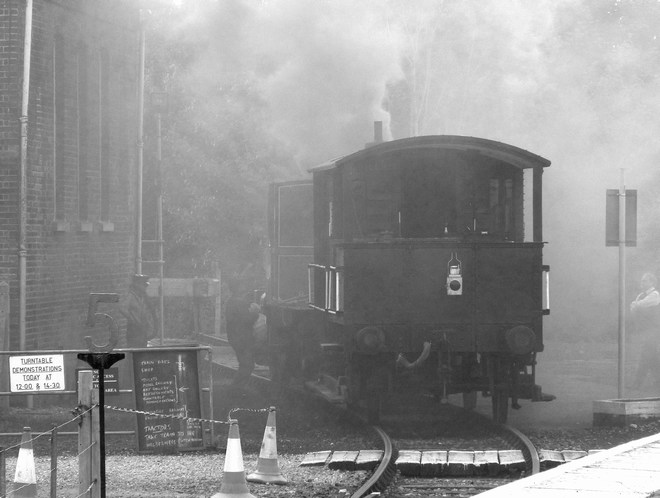
In a cloud of dense smoke and steam, the train makes its way
from a turntable demo back to the station platform.
A black and white photo is used to give a vintage feel.
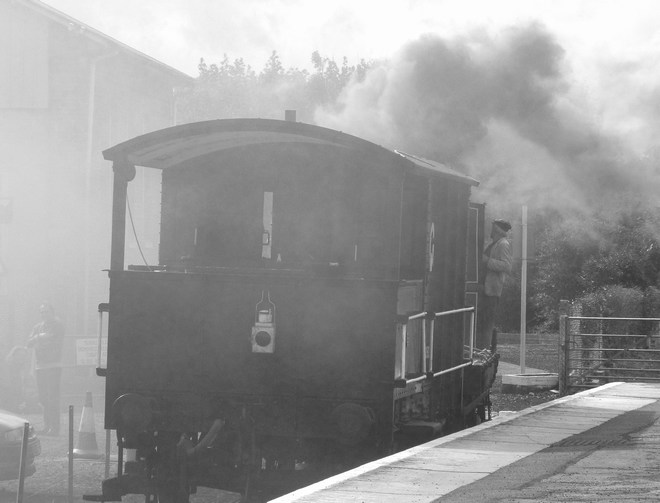
Another black and white shot taken as the train reaches the platform.
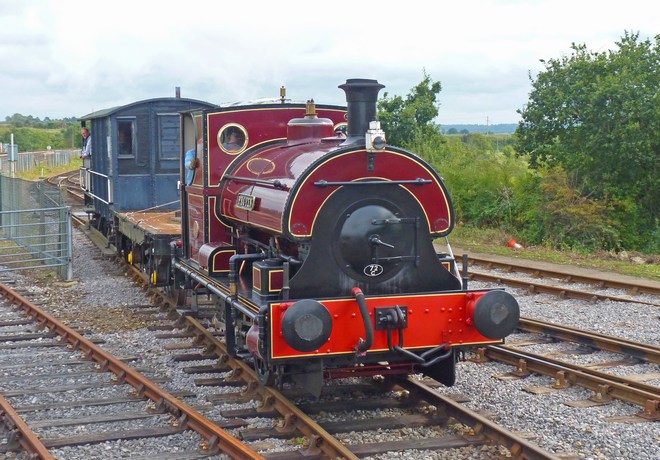
Pectin on another round trip.
This is the view passengers get when being pushed by Pectin to the end of the line.
The Network Rail main line is on the left side of the wire fence. The former Clifton Maybank branch runs straight ahead.
Approaching the end of the working track.
Three nicely restored wagons on the unused part of the Clifton Maybank branch.
Wagons awaiting restoration.
Also resting at the end of the branch are these former Intercity coaches, presumably waiting for restoration to start.
| My Photographs | Links Page |
© Copyright M J Smith, 2010
No photographs to be reproduced elsewhere without permission.